EPL made the second raid to the forest areas of Western Ukraine to inspect forest logging and its legitimacy. This time we examined management of forestry in the national nature park “Hutsulshchyna” and the state enterprise “Kutsky forestry.”
In this area we have recorded a large number of illegal logging done by local people without official permission from the staff of the national park or the forestry.
As you know, a lot of legal sanitary logging is carried out in order to eliminate the effects of windfalls when the trees in an area of several hectares can be completely demolished by the wind and piled up in thick layers of several meters over the ground. In such cases, blockages are removed to make way for the resumption of young forests, and the local population gets wood that they need so much. When falling, trees can affect healthy trees and damage them.
Also, the usual practice is that forestry staff sometimes turn a “blind eye” to the fact that local residents take the wood of the trees that were hit by the wind. This is because some socially vulnerable categories of the population cannot afford to buy legal wood. But smart thieves also use this natural phenomena and make artificial cutting.
In the picture below you can see an artificially made cutting of a tree (there is typical sawdust on the ground as a result of cutting) which in a different picture looks like a natural fissure, formed as a result of the overthrow of another tree on it.

In addition, wood can often be cut in the horizontal plane to make it vulnerable to falling trees and then under pressure it could easily break down and then qualify for sanitary logging.
The photo below shows the tree cut in different places, where this trick did not work.

Apart from these violations, one can often find traces of attempts to cover up illegal logging. After each cutting a stump remains, which is evidence of a violation, and thieves try to get rid of these stumps first of all. This is done in various ways. In the picture below you can see an example of burned and partially buried in fallen leaves stump, which in this way was supposed to be hidden.
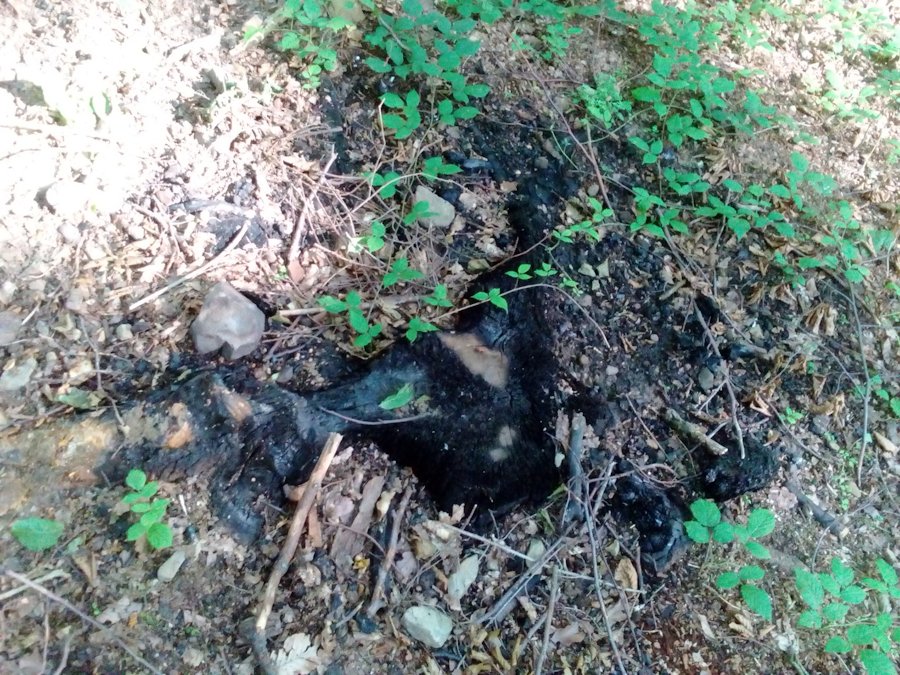
Often stumps are poured with various oils and combustible materials so that they get black and look like logging of past years and do not become the objects of investigation. Below you can see quite a new stump without signs of decomposition, the log cabin of which turned black because of grease. Also, at the root paw there was no stamp that is put to mark legal and registered logging done under the logging plan.
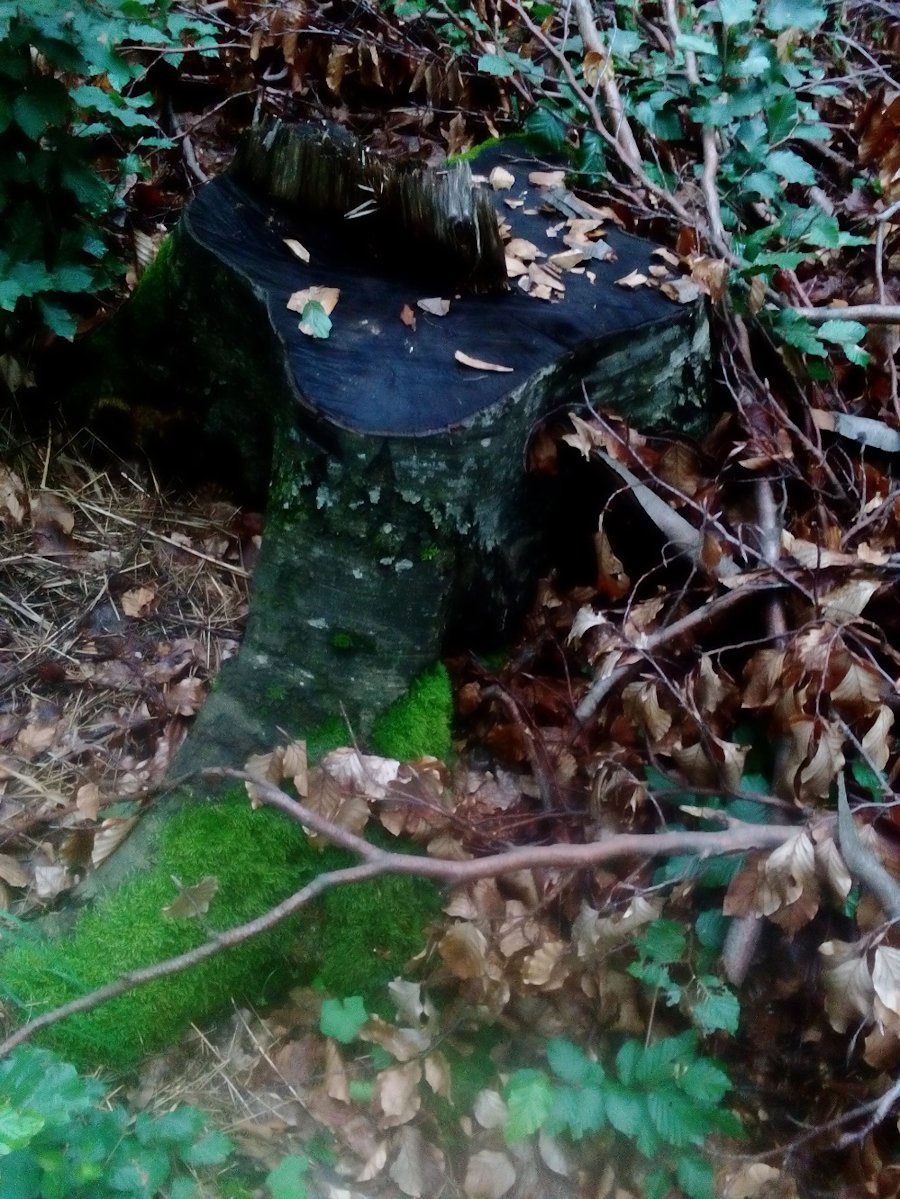
This is an example of the stamp that should be on the root paw to mark a legal logging.
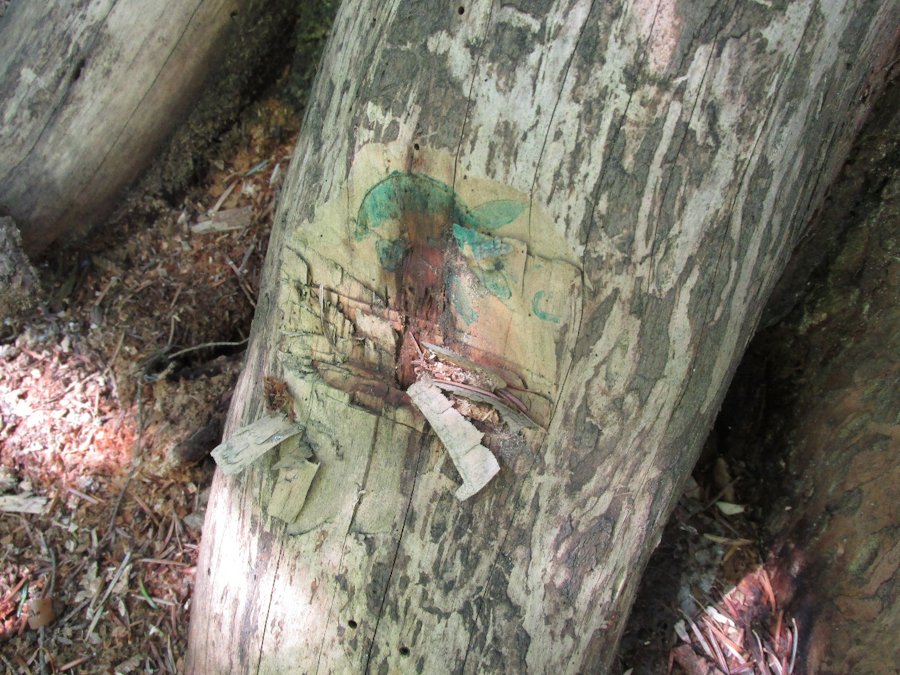
The above violations were fairly obvious and easily identifiable. But there were also occasions when it would be quite difficult to detect violations. At one of these sites, we found a cut tree without a signs of trailing. It was not moved and was cut into pieces in the same place. The wood was clean, with no obvious manifestations of disease or injury. To find the stamp and any other signs of legality of logging, we started looking for the tree stump, but the task proved complicated. No stump means no violation. Can you imagine that this is the place of a stump?
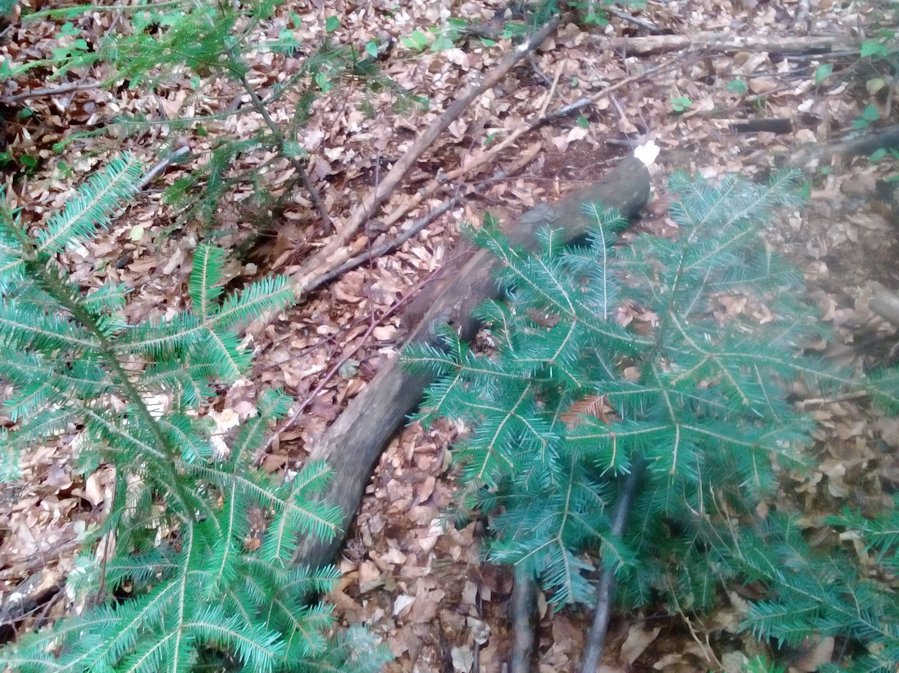
We could not either. We found it accidentally having stepped on it and feeling something hard under our feet. The stump was very effectively diminished to the level of the ground and covered with dry leaves (there was a log over it to disguise it), so it looked absolutely natural.
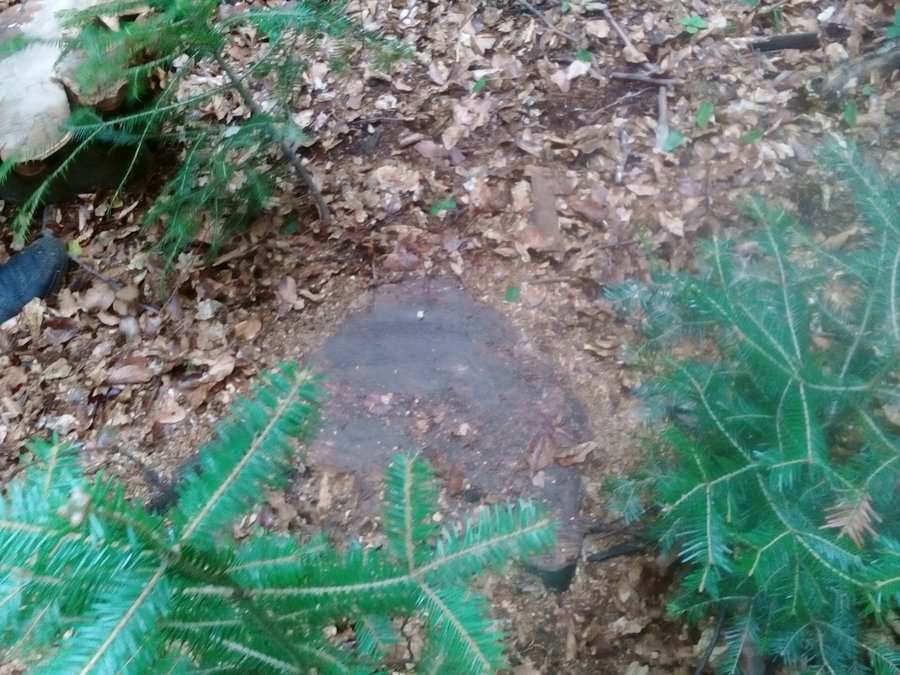
Nearby we found the upper part of the stump that absolutely fit to its lower part.
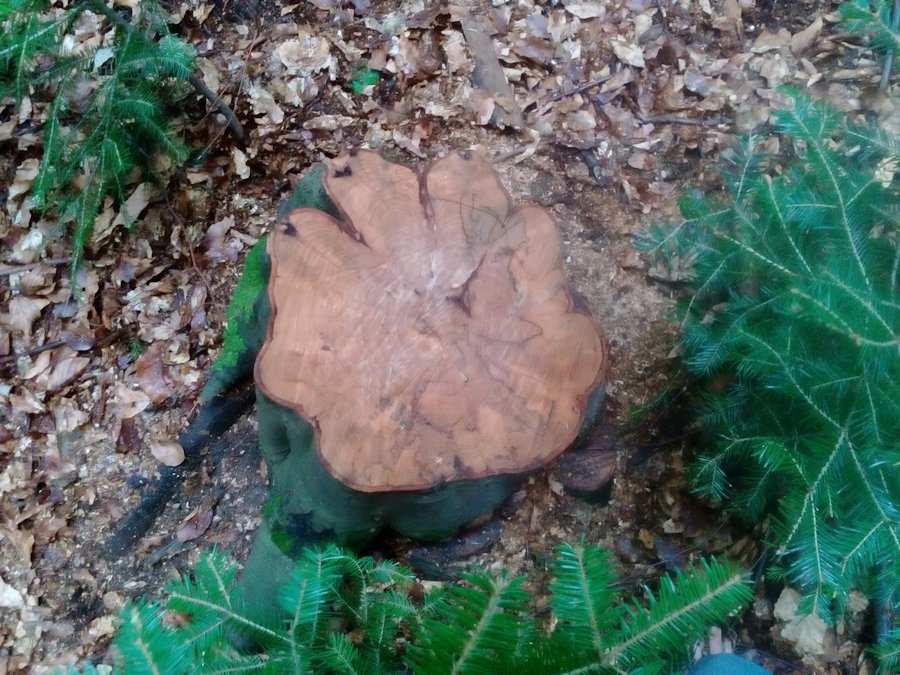
All these violations were found in the forestry and in the territory of the park. It should be noted that the illegal cutting of this scale is possible because of the permanent conflict between the administration of the national natural park “Hutsulshchyna”, forestries, local activists, backed by journalists and NGOs. In the Carpathians, in villages that do not have gas supply there will always be demand for wood. In the current economic situation, nobody will carry firewood and wood for construction for fifty kilometers from neighboring districts. If forestries and national parks do not carry sufficient legal logging, the local people will take firewood illegally (or on agreement with foresters). Masters of forestries or forest inspectors of the National Park with salaries as low as 1500-2500 UAH cannot deal with this.
It should be noted that in some cases logging in forests is truly necessary. For example, the photo below shows a slope with fully dried fir-trees. All trees are of the same thickness, and therefore were planted simultaneously, which means this is an artificial plantation. The natural habitat of spruce in the Carpathians is from 1500-1600 m above the sea level, and at lower levels this species poorly survives and is vulnerable to pests and often dries. Such artificial plantings are nursery for bark beetles, and if the trees affected by pests are not cut, hundreds of hectares of forest around will get sick and dry. It is very important that after such cutting the area should not be planted again with alien species, but should remain free for natural regeneration. Then there grow beeches and firs, which will eventually become powerful forest, a natural for this territory and resistant to pests, beneficial for rich biodiversity.
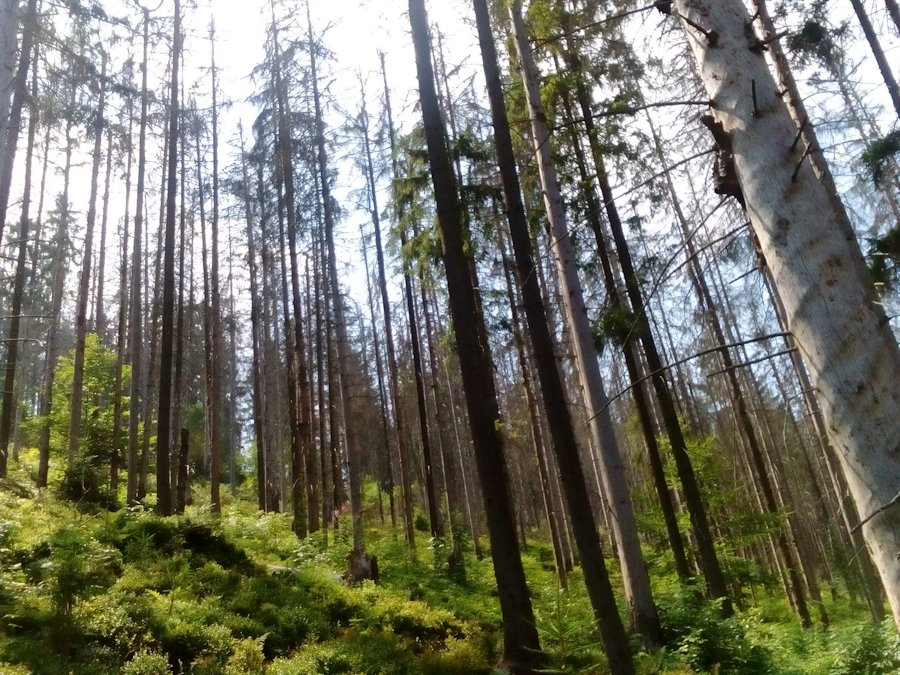
Currently EPL experts continue investigation of forest logging in the Carpathians and analyze plans of sanitary logging.
—————————————————————————————————–
The project is implemented at financial support of International Renaissance Foundation. International Renaissance Foundation is one of the biggest charitable foundations in Ukraine founded by the investor and philanthropist George Soros. The International Renaissance Foundation’s mission is to foster an open, participatory, pluralist society based on democratic values in Ukraine.
International charitable organization “Environment-People-Law” is a human right organization that since 1994 has been protecting environmental rights and other adjacent rights and performing a wide spectrum of activities in the field of environmental protection.

